“Get out, the Pakistanis are coming”: For millions along India’s border, war has already begun
On television, war was still just a possibility on the horizon: generals and news anchors debated whether Pakistan would actually respond to India’s “surgical strike”—a military operation carried out across the border early Sept. 29, reportedly killing scores of Pakistan-backed terrorists.
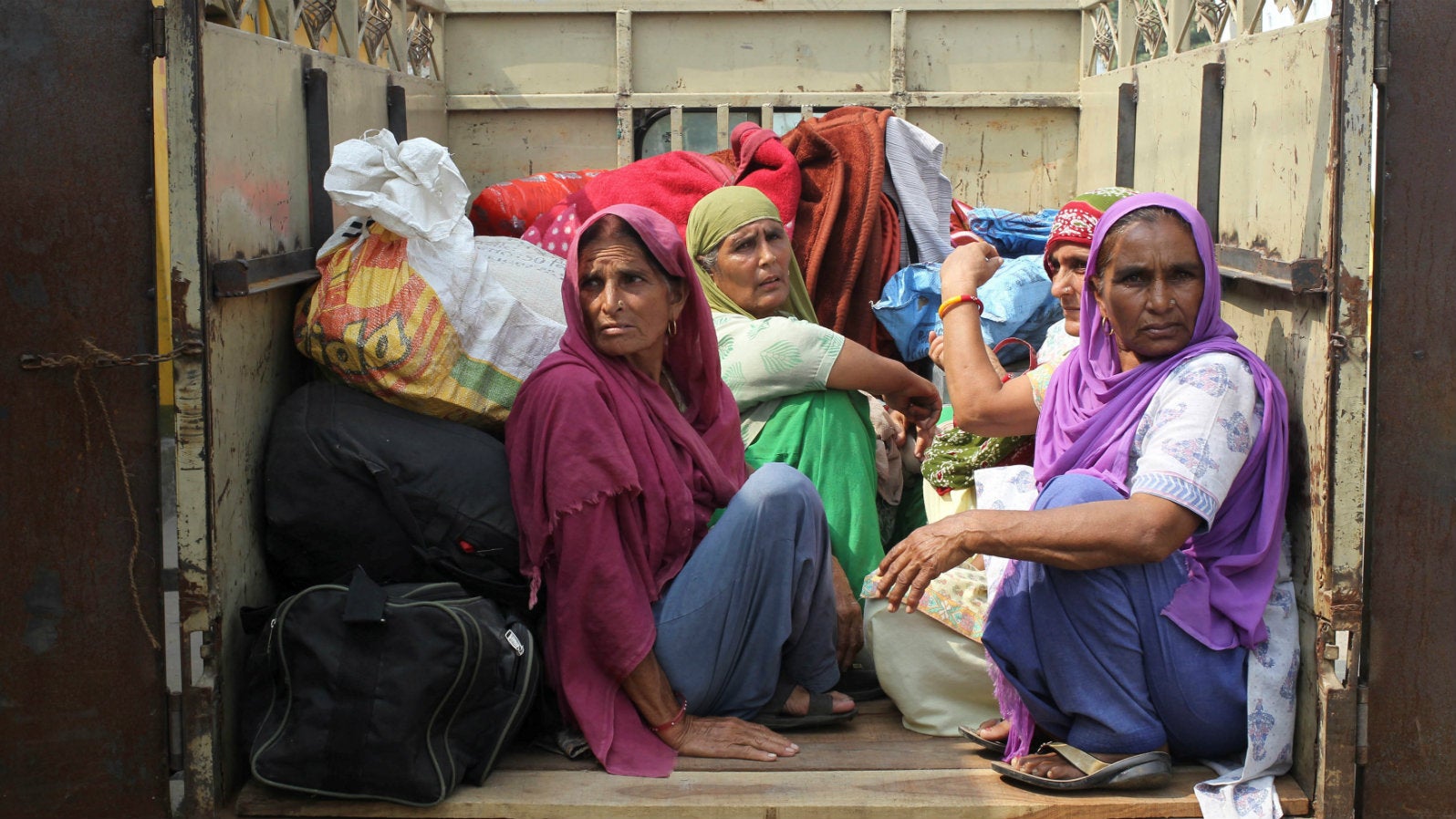

On television, war was still just a possibility on the horizon: generals and news anchors debated whether Pakistan would actually respond to India’s “surgical strike”—a military operation carried out across the border early Sept. 29, reportedly killing scores of Pakistan-backed terrorists.
But for 86-year-old Binder Kaur from Kalu Wala village in Punjab’s Ferozepur district, the war had began the same night when an announcement from the local gurudwara’s speakers told her that it was time to leave.
“It’s happening again,” she cried out to her children, Bibi and Prem Singh, who were wasting time, she said, trying to figure out what the announcement meant: they had to leave, but to where? And for how long?
Without knowing the answers to these questions, how were they supposed to know what to carry?
“My son and daughter don’t know about Partition, or 1971… They have heard stories, but they don’t know what that time was,” Kaur said. “They were too slow, I had to scream – niklo, niklo, Pakistani aa rahein hai.” Get out, get out, the Pakistanis are coming.
Finally, the family gathered its children, a few clothes, three cots, and a wailing mother on a trolley hitched to a tractor, and rode out of the village at 3am. They eventually found shelter 26 km away in Bare Ke.
The family is among the approximately 1,500,000 people who have been displaced following the evacuation of Punjab’s border villages in Amritsar, Tarn Taran, Gurdaspur, Ferozepur, Pathankot, and Fazilka. Some, like Kaur’s family, left their homes in the dead of night. Others were escorted out by army vehicles the next morning, or they just jumped atop buses. The hasty departure, spurred by that short single line—evacuate at once—meant that not a single one of the people who fled their homes left with a plan.
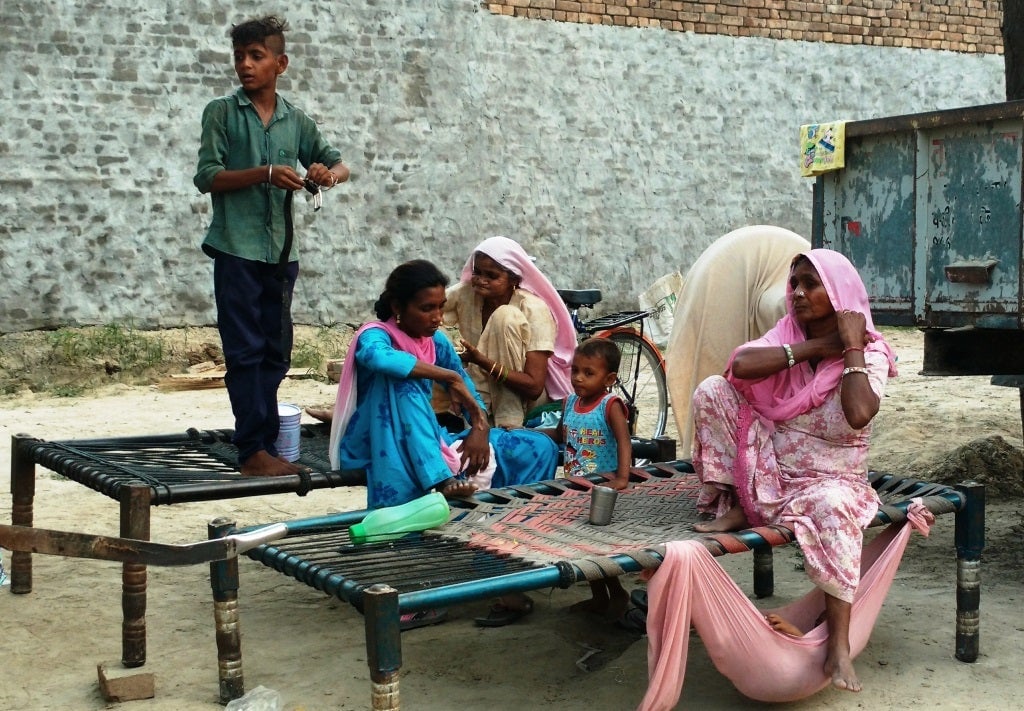
The morning after the evacuation, the media was full of arrangements made for the evacuees, in gurudwaras and schools across the state. Since only villages that fall within a distance of 10 km from the border have been asked to be evacuated, residents there have chosen to remain as close to the 10 km line as possible, in the hope of an early return.
A lucky few have moved in with relatives that don’t mind having guests with no fixed date of departure, and others are living in cramped quarters with the barest of arrangements, waiting for the tensions to ease.
Life in gurudwaras
At the Bhikhiwind gurudwara in Tarn Taran, nearly 300 families, with children, struggled to avoid the smoke from a mosquito-fumigation machine. The presence of a policeman at the entrance stopped them from running outside into the marble-floored gurudwara complex.
Coughing, faces covered with handkerchiefs and dupattas, they waited in a common balcony for the fog of insecticide to clear out.
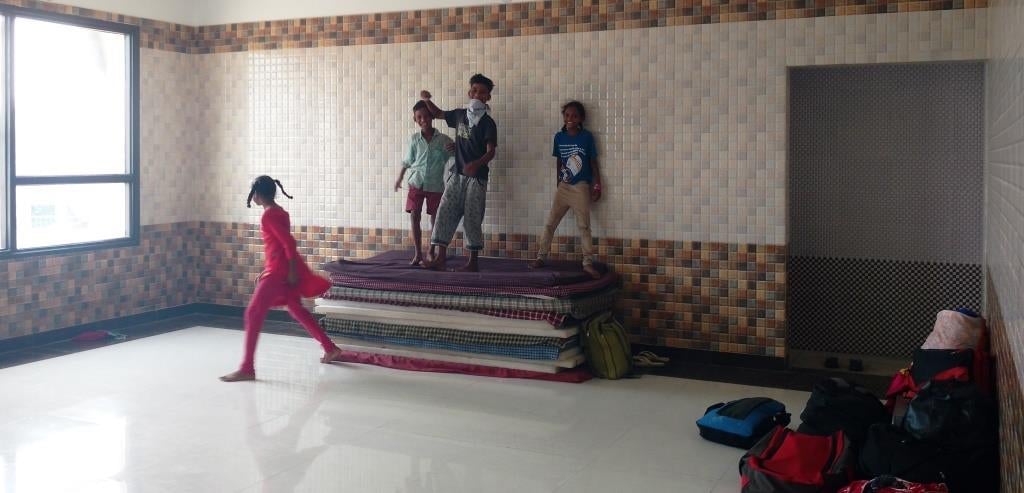
The samiti members seemed mystified that the villagers did complain, not just to them, but to visiting press and politicians.
“We are making all the necessary arrangements: food, water, beds, medicines… They have no reason to complain,” said Ajit Singh, a member of the Gurudwara Prabandhak Samiti.
“It’s just because they’re old,” constable Rajbir Singh said. “My mother is the same way.”
The children treated the evacuation camp as a kind of extreme adventure: making sorties to the gurudwara to stare at city-folk, dancing on mattresses piled atop each other, and playing with press cameras. The adults were more sombre.
“My husband and I have bad knees,” said 72-year-old Joginder Kaur of Naushehra. “It’s nice of the gurudwara to give us these mattresses to sleep on, but if we sit on the floor, we can’t get up. So we spend a lot of our time walking.”
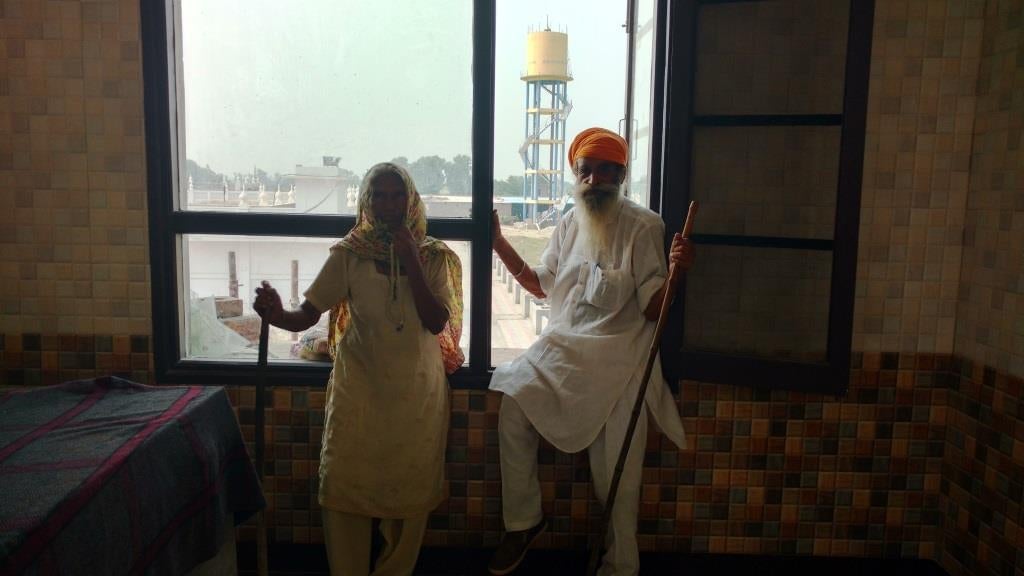
In the gurudwara’s quarters, all the families are forced to sleep dorm-style, and a few young men stand guard outside the rooms.
Outside, in the balcony, 13-year-old Suman Jaggi said she was too old to play with the children, and helped her mother hang up clothes to dry.
“We left with no clothes to change into, and have no soap to wash our things with,” her mother, Kashmir Jaggi, said. “I’m worried about my daughter, sharing three bathrooms between 300 people is hard… She is still very young, you know.”
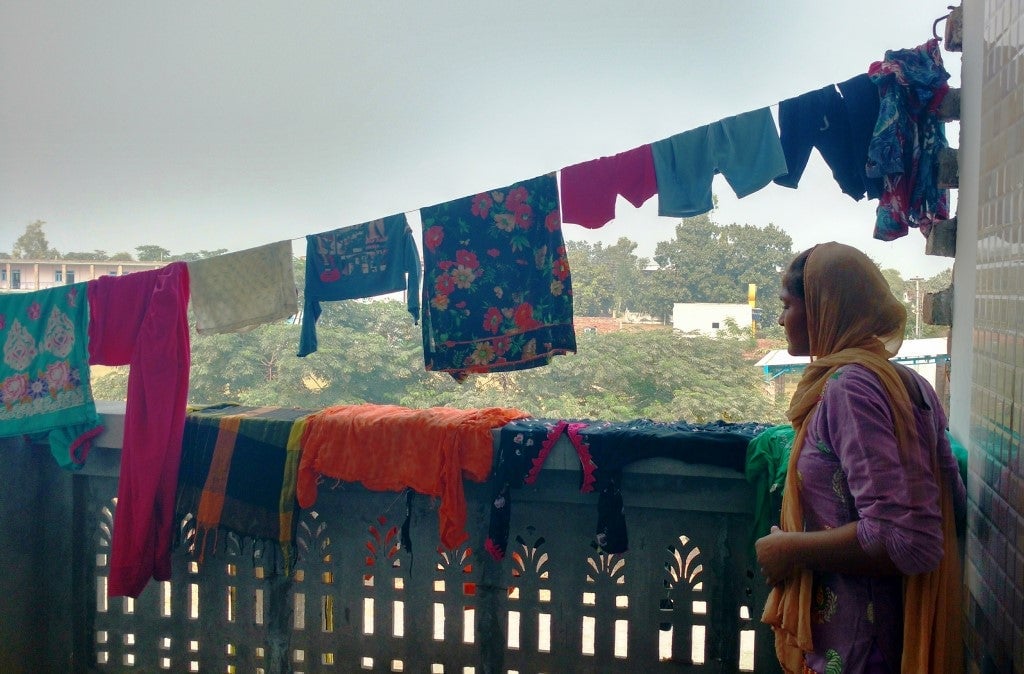
Suman looked out at the city—they had relatives in Amritsar, but they wouldn’t answer their phones, and hadn’t bothered calling even though news of the evacuation was everywhere. Suman had just finished her exams at the school in her village and had been looking forward to a few weeks of rest when the surgical strikes forced them to leave.
“All this fighting is very boring,” she said.
The never-ending wait
The impending sense of danger is both everywhere and nowhere to be seen in Punjab. Sharing part of India’s international border with Pakistan, the state has always had heavy military presence. Armed trucks frequently ply the roads; the only difference is that this time, they are often accompanied by trucks filled with furniture, Godrej almirahs, and livestock.
The other sign of strain is that the border ceremonies of Attari at Wagah, and Hussainiwalla near Ferozepur, have been stopped. Wagah, which is usually thick with people and vendors and echoing with cheers on weekends, was completely silent this Saturday (Oct. 01)
“It will stay this way until our next order,” B S Yadav, an officer of the Border Security Force, said. Yadav has served in Punjab for the last five years, and the Wagah border, he said, was a great posting, “When it’s peaceful, it’s like a festival here all year through.”
On the way to Ferozepur, unending fields of paddy lie waiting to be harvested. This is a bad season to leave fields unattended—they must be harvested before they get spoilt or are looted by neighbours or vagrant cows eyeing a feast.
In Bare Ke locality, barely 5 km from the border, hundreds of men had left women and children in a half-built gurudwara to return to the border, harvesting rice, and feeding their buffaloes. They came back only after dusk, starving, trucks loaded with the things they left behind on the night of the announcement.
The gurudwara’s incomplete wing, where 200 families have laid their cots, has no doors, electricity or mesh on the windows. So 24-year-old Sardar Singh suspected he might have a fever. He sat on a cot, watching the news with his niece and nephew. Every time an image of Pakistan’s army chief general Raheel Sharif appears on screen, it was accompanied by a sharp thwack. India, the anchor explained, had delivered this “slap” through its armed forces, and Pakistan will never recover. On screen, war clouds loomed on the horizon.
“I do feel better when I watch this,” Sardar Singh said. “Our soldiers will fight for us, and soon, we will return home, right?”
The camp is full of questions: why aren’t the borders of Rajasthan being evacuated? Why would the Pakistanis strike now, when India is expecting it to. Wouldn’t they wait, until the evacuees return home, and forget to be alert? What is Modi saying? What is America saying? What will Pakistan say? At night, when the men returned, they found themselves unable to sleep. They walked on the road outside the gurudwara, worrying, speaking in whispers.
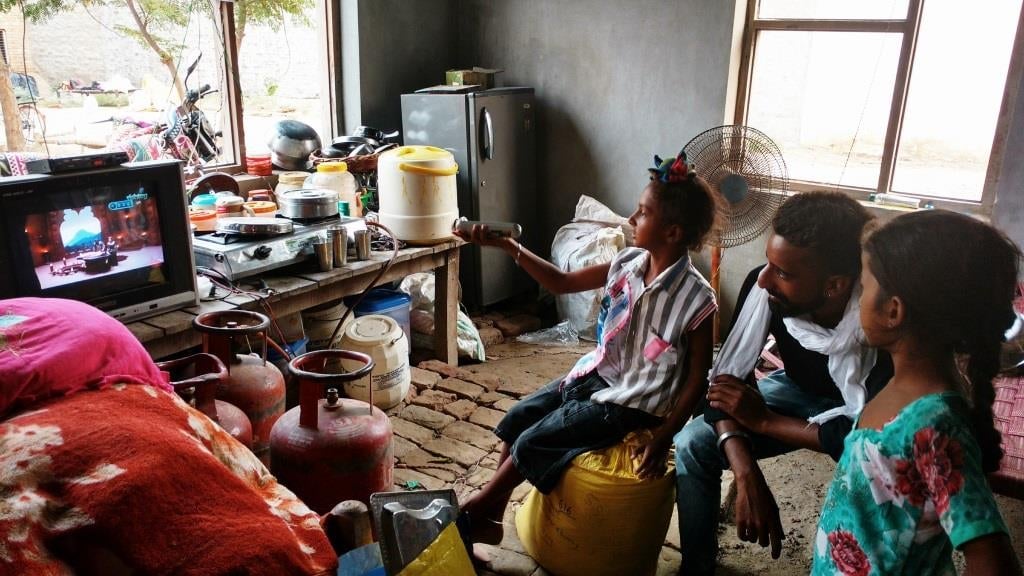
“At Khassa village near the border, the people haven’t left,” a farmer named Jatti said. “Everyone keeps their lights off, and stays very quiet.”
“As if Pakistani bombs will know the difference,” his wife taunts him.
On the morning of Oct. 02 at camps in Pathankot, Faridkot and Kartarpur, yellow balloons are said to have crossed the Line of Control, bearing threatening messages for prime minister Narendra Modi
“Modiji, Ayubi ki talwaren abhi hamare paas hain. Islam zindabad,” one reportedly read, warning Modi about the mythological “sharpest sword in the world,” used by Salahuddin Al Ayyubi, the 12th-century ruler of Egypt and Syria.
Others warned India that it will finally be destroyed by Kashmir. Some simply declared their love for Pakistan.
None of them bears any signs of peace. It will be a while before life returns to normal for residents of Punjab’s villages along the border. Binder Kaur, the 86-year-old evacuee from Kalu Wala village, is right. There, the war has already begun.
This post was first published on Scroll.in. We welcome your comments at [email protected].